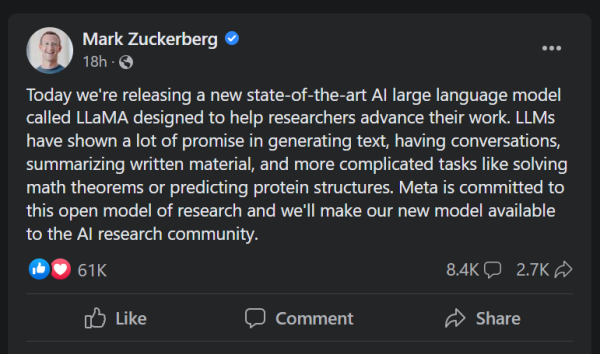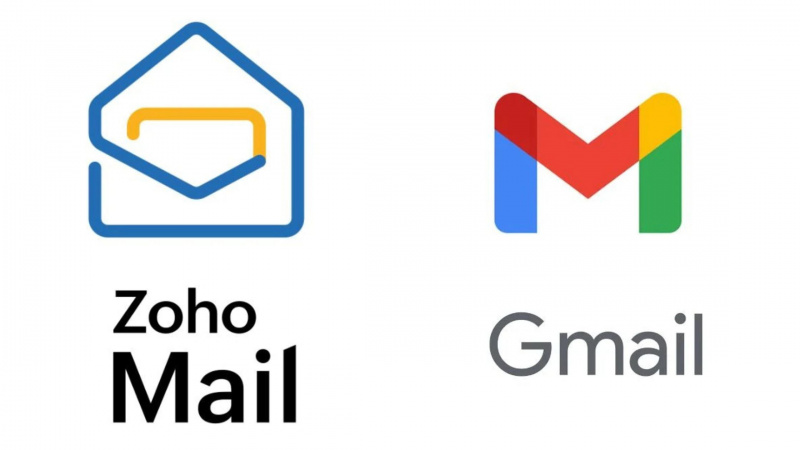Meta launches AI language model LLaMA for researchers
The company has publicly launched its Large Language Meta AI (LLaMA) model. According to the official statement, LLaMA is a basic language model developed to he
- by B2B Desk 2023-02-27 04:55:02
The company has publicly launched its Large Language Meta AI (LLaMA) model. According to the official statement, LLaMA is a basic language model developed to help researchers in their work in the subfield of artificial intelligence. Interestingly, this will be Meta's third MLM after Glactica and Blender Bot 3, which were shut down immediately after incorrect results.
What is LLaMA?
LLaMA is not primarily a chatbot; it is a research tool that Meta says has the potential to solve problems with AI language models. In his official blog, Meta stated that "smaller, better-performing models like LLaMA allow people in the research community who do not have access to significant amounts of equipment to investigate these models, thus democratizing access in this crucial and quickly changing field."
LLaMA is a set of language paradigms ranging from parameters 7B to 65B. The company said that it trains its models on trillions of codes and claims that it is possible to train the latest models using public data sets and not rely on private and inaccessible data sets.

How is LLaMA different?
According to Meta, training smaller basic models, such as LLaMA, is ideal because they require significantly reduced computing power and resources to test, validate, and solve new use cases. Fundamental language models are known to train on large amounts of unlabeled data and this makes them ideal for customization according to different tasks. Meta said it will offer LLaMA in sizes like 7B, 13B, 33B and 65B.
In his article, Meta notes that LLaMA-13B outperforms OpenAI's GPT-3 (175B) in most benchmarks and that LLaMA-65B is competitive with top models, DeepMind's Chinchilla70B and Google PaLM-540B. . Once fully trained, LLaMA-13B could be a boon to small businesses looking to test on these systems; however, it may still be a long way off for researchers working in isolation.
However, LLaMA is not currently used in any Meta products and the company plans to make it available to researchers. The company previously released the LLM OPT-175B, but the LLaMA is its most advanced system. Meta has also made the source code of the LLaMA model available to the external public to see how the system works. This will allow them to customize and collaborate on related projects.
Decoding Large Language Models
Large Language Models, or LLMs, are artificial intelligence systems that consume large amounts of digital text from Internet sources, such as articles, news reports, and social media posts. These digital scripts are used to train software that predicts and produces content from scratch based on prompts and queries. These templates can help with tasks like writing articles, creating social media posts, suggesting code, and creating chatbot conversations.
Meta's latest release comes at a time when the company has been largely absent from the talk surrounding its revolutionary AI chatbot. It was one of the first companies to launch its own chatbots. However, due to incorrect results and a lackluster response, his plans went awry. With LLaMa, Meta seems to have gotten the game back.
Also Read: Spotify uses ChatGPT maker OpenAI's tech to launch AI DJ

POPULAR POSTS
The Agentic Revolution: Why Salesforce Is Betting Its Future on AI Agents
by Shan, 2025-11-05 10:29:23
OpenAI Offers ChatGPT Go Free in India: What’s Behind This Big AI Giveaway?
by Shan, 2025-10-28 12:19:11
Zoho Products: Complete List, Launch Years, and What Each One Does
by Shan, 2025-10-13 12:11:43
Arattai vs WhatsApp: Which Messaging App Should You Choose in 2025?
by Shan, 2025-10-10 11:55:06
Top Buy Now Pay Later (BNPL) Apps for Easy Shopping in 2025
by Shan, 2025-09-22 10:56:23
iPhone 17 Sale in India Begins: Full Price List, Launch Offers and Store Availability
by Shan, 2025-09-19 12:00:45
Apple September 2025 Event Recap: iPhone 17, iPhone Air, Apple Watch Series 11, and India Pricing Revealed
by Shan, 2025-09-10 09:55:45
RECENTLY PUBLISHED

Loan EMIs to Drop as RBI Slashes Repo Rate - Full MPC December 2025 Highlights
- by Shan, 2025-12-05 11:49:44

Pine Labs IPO 2025: Listing Date, Grey Market Premium, and Expert Outlook
- by Shan, 2025-11-05 09:57:07

Top 10 Insurance Companies in India 2026: Life, Health, and General Insurance Leaders Explained
- by Shan, 2025-10-30 10:06:42

Best Silver Investment Platforms for 2025: From CFDs to Digital Vaults Explained
- by Shan, 2025-10-23 12:22:46

Zoho Mail vs Gmail (2025): Which Email Platform Is Best for Businesses, Startups, and Students?
- by Shan, 2025-10-09 12:17:26

PM Modi Launches GST Bachat Utsav: Lower Taxes, More Savings for Every Indian Household
- by Shan, 2025-09-24 12:20:59




 Subscribe now
Subscribe now 